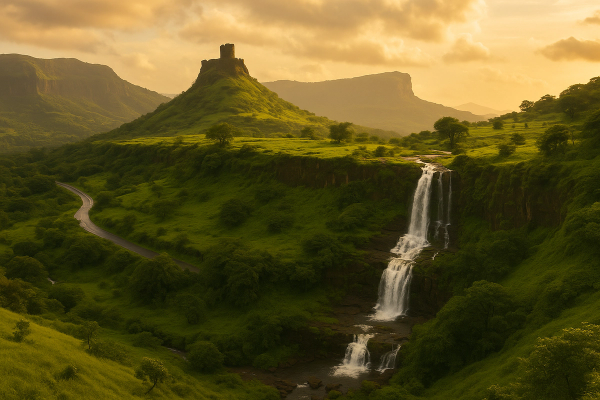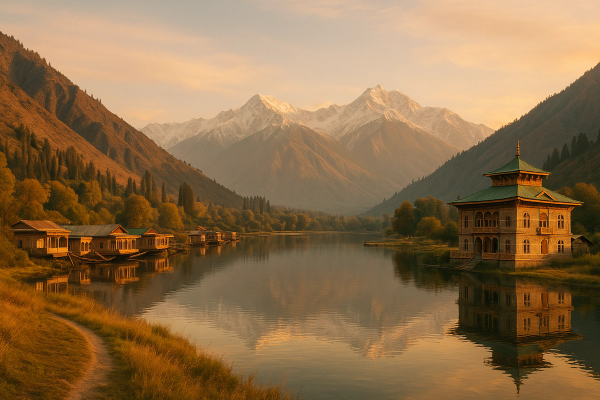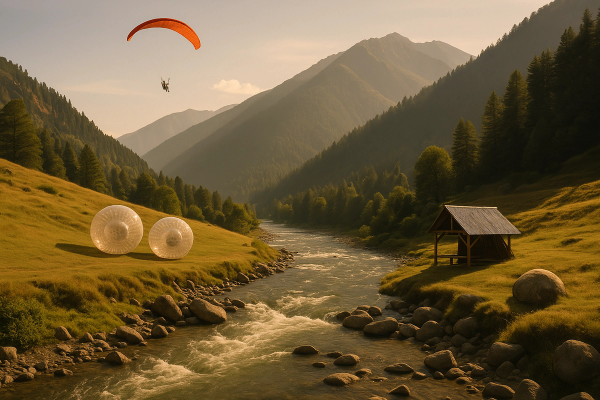Okay, Let's Talk Galapagos: My 2025 Guide to This Insane Wildlife Paradise#
So, the Galapagos Islands. Honestly, where do I even start? I remember stepping off the plane onto Baltra Island, and it hit me – this dry, volcanic landscape felt… otherworldly. Not exactly the lush jungle I maybe kinda pictured? But then you see your first marine iguana just chilling on the path like it owns the place, and BAM. You get it. This place is different. If you're dreaming of a Galapagos travel experience for 2025, seeing those giant tortoises lumbering around or swimming with playful sea lions, you're in the right spot. This isn't just another beach vacation; it's a full-on nature trip into a living laboratory. Stick with me, and I'll spill all the details from my trip – the good, the slightly challenging, and the absolutely unforgettable stuff about the amazing Galapagos wildlife and how to plan your own Ecuador travel adventure here.¶
What's the Big Deal About the Galapagos Anyway?#
Alright, quick overview. These volcanic islands are way out in the Pacific Ocean, part of Ecuador. They're famous 'cause, y'know, Charles Darwin hung out here and had his big 'aha!' moment about evolution. The animals here evolved in isolation for ages, so they're super unique and weirdly unafraid of humans. Like, you can walk right past a blue-footed booby doing its goofy mating dance, and it barely bats an eye. It's kinda wild. The whole place is a UNESCO World Heritage site, and they take conservation very seriously, which is awesome but also means there are rules to follow (more on that later!).¶
When Should You Go? Timing Your Galapagos Trip#
Okay, picking the 'best' time for Galapagos travel is tricky 'cause there isn't really a bad time. It really depends on what you wanna see and do. There are basically two main seasons:¶
The Warm/Wet Season (Roughly December to May)#
This is when it's warmer, sunnier (usually!), and the seas are calmer. Great for snorkeling and swimming 'cause the water temp is nicer. You get occasional heavy showers, but they often pass quickly. It's prime time for seeing green sea turtles nesting and land birds breeding. I went in April once, and the water was just perfect for snorkeling.¶
- Pros: Warmer water, calmer seas, sunny days (mostly), good land bird activity, sea turtle nesting.
- Cons: Can be a bit more humid, occasional heavy rain, maybe slightly less marine life visibility sometimes?
The Cool/Dry Season (Roughly June to November)#
They call this the 'Garúa' season 'cause there's often a misty drizzle, especially in the highlands. It's cooler, both air and water temps, thanks to the Humboldt Current rolling in. But here's the kicker: this current brings tons of nutrients, so marine life goes NUTS. Think whales, dolphins, loads of fish. It’s peak season for seeing waved albatrosses (on Española) and penguins get more active. You'll want a wetsuit for snorkeling, for sure.¶
- Pros: Incredible marine life activity (whales!), penguin activity, albatrosses (Española), less humid.
- Cons: Cooler water (need a wetsuit!), choppier seas sometimes, overcast skies more common ('garúa' mist).
Honestly? If you're mainly there for underwater stuff and can handle cooler water, June-Nov is amazing. If you prefer warmer beach weather and calm seas, Dec-May is your jam. I kinda lean towards the shoulder months like April/May or September/October to get a bit of both worlds, maybe? It's a tough call, tbh.
Getting There & Moving Around the Islands#
First things first: you gotta fly from mainland Ecuador. No international flights go directly to the Galapagos. Your Ecuador travel usually starts in Quito or Guayaquil.¶
Flights to the Galapagos#
You'll fly into one of two main airports:¶
- Baltra (GPS): Serves Santa Cruz Island (the most populated one). You take a short bus ride, then a ferry across the Itabaca Channel, then another bus or taxi to Puerto Ayora (the main town). Sounds complicated, but it's super organized.
- San Cristobal (SCY): This airport is right near the main town, Puerto Baquerizo Moreno. Super convenient if you're starting or ending your trip here.
Airlines like Avianca and LATAM fly these routes. Book in advance, especially during peak season! Also, remember you gotta pay the Galapagos National Park entrance fee ($100 USD per person, usually cash) and the Transit Control Card ($20 USD, cash) before you even check in for your Galapagos flight in Quito or Guayaquil. Don't get caught out!¶
Island Hopping & Getting Around#
Okay, so you can explore via a live-aboard cruise (which hits more remote spots) or do a land-based trip, staying on the inhabited islands and taking day trips or ferries between them. I did land-based and loved the flexibility.¶
- Inter-Island Ferries: These are speedboat-style ferries connecting Santa Cruz, San Cristobal, and Isabela. They usually run twice a day. Cost is around $30-35 USD per person, one way. Heads up: these rides can be BUMPY. Like, seriously bumpy. If you get seasick, take meds beforehand. Trust me on this one. I thought I was tough... I wasn't. lol.
- Inter-Island Flights: Small planes fly between islands too. More expensive, but way faster and smoother. Good option if you're short on time or really hate rough boat rides.
- On the Islands: In towns like Puerto Ayora (Santa Cruz) or Puerto Baquerizo Moreno (San Cristobal), you can walk most places. White pickup truck taxis are everywhere and pretty cheap for longer distances ($1.50 - $5 for most town trips). You can also rent bikes, which is fun for exploring nearby beaches like Tortuga Bay.
Where to Crash: Finding Your Galapagos Base#
Most land-based Galapagos travel happens across three main inhabited islands. Each has its own vibe.¶
| Island | Vibe | Good For | Accommodation Style |
|---|---|---|---|
| Santa Cruz (Puerto Ayora) | Bustling hub, most services | First-timers, variety of tours/food | Widest range: Hostels, mid-range hotels, some nicer lodges |
| San Cristobal (Puerto Baquerizo Moreno) | More laid-back capital, easy airport access | Sea lions everywhere, Kicker Rock access | Good mix: Guesthouses, hotels, some waterfront options |
| Isabela (Puerto Villamil) | Chillest, beach town feel, huge island | Penguins nearby, hiking Sierra Negra | More basic generally: Hostels, simple guesthouses, a few nicer spots |
My Two Cents on Where to Stay#
I split my time between Santa Cruz and Isabela and loved the contrast. Santa Cruz is convenient, loads of restaurants and tour operators. Puerto Ayora has energy. But Isabela... man, walking down those sandy streets with marine iguanas lounging around felt really special. It's much quieter.¶
- Budget: Hostels like Galapagos Dreams (Santa Cruz) or Hostal Villamil (Isabela) are solid options, usually around $20-40/night for a dorm.
- Mid-Range: Lots of decent hotels and guesthouses in the $80-150 range. Look at Hotel Solymar (Santa Cruz, great location) or Hotel Albemarle (Isabela, right on the beach).
- Splurge: Finch Bay Galapagos Hotel (Santa Cruz, requires a short boat taxi) or Iguana Crossing (Isabela) offer more luxury, think $300+.
Booking Tip: Especially for popular spots or during peak season, book accommodation way in advance. Good places fill up fast. Don't just wing it unless you're okay with whatever's left!
What To Actually DO: Seeing the Famous Galapagos Wildlife (and More!)#
Okay, the main event! The Galapagos wildlife is why you're here, right? It's everywhere, but some spots are must-dos.¶
The Big Hitters (Don't Miss These!)#
- See Giant Tortoises: Head to the highlands of Santa Cruz (El Chato Tortoise Reserve or a private ranch) or the breeding center on Isabela. Seeing these ancient dudes roaming free is just... humbling. Seriously. Cost: ~$5-10 entrance for reserves, often included in highland tours.
- Snorkel/Dive Kicker Rock (León Dormido): Off San Cristobal. This massive rock formation is THE spot for seeing sharks (Galapagos sharks, sometimes hammerheads!), turtles, rays, and tons of fish. Day trip cost: ~$120-160. Worth it.
- Visit Tortuga Bay (Santa Cruz): It's a bit of a walk (like 45 mins) but so worth it. Stunning white sand beach (Playa Brava - careful, strong currents!) and a calmer lagoon (Playa Mansa) perfect for swimming. Marine iguanas everywhere. Free entrance.
- Kayaking/Snorkeling Tintoreras Islet (Isabela): Short boat trip to see penguins chilling on rocks, white-tipped reef sharks resting in lava channels (from viewing platform), and often turtles and sea lions while snorkeling. Cost: ~$45-55.
- Look for Blue-Footed Boobies: You can spot them on North Seymour Island (popular day trip from Santa Cruz, ~$180-250), parts of Española, or sometimes even just fishing near the coastlines.
Off the Beaten Path (Sort Of)#
- Hike Sierra Negra Volcano (Isabela): One of the world's largest volcanic calderas. It's a decent hike (like 16km round trip?) but the views are insane, especially walking across the fairly recent lava fields of Volcan Chico. Day trip: ~$40-50.
- Los Tuneles (Isabela): A bit pricier day trip (~$110-140), but the lava tunnels forming arches and bridges above and below the water are spectacular. Amazing snorkeling spot – saw seahorses here!
- Explore Las Grietas (Santa Cruz): A swimming hole in a volcanic crevice filled with brackish water. You take a water taxi across the bay in Puerto Ayora, then a short walk. Refreshing, but can get crowded. Go early! Free (after water taxi).
Insider Tip: Day tours often include lunch and snorkeling gear. Check what's included before you book. And maybe bring your own mask if you're picky about fit - rental gear can be hit or miss.
Fueling Your Adventures: Food & Drink in the Galapagos#
Food in the Galapagos is heavily influenced by coastal Ecuadorian cuisine. Lots of fresh seafood! Don't expect fancy Michelin stars, but you can eat really well.¶
What to Try#
- Ceviche: Fresh raw fish or seafood 'cooked' in lime juice with onions, tomatoes, cilantro. So refreshing. Every place does it slightly differently. Try the 'ceviche de pescado' (fish) or 'mixto' (mixed seafood).
- Encebollado: A hearty fish soup/stew, usually tuna, with cassava (yuca) and pickled onions. Classic Ecuadorian breakfast/lunch. Sounds weird for breakfast, but it works!
- Grilled Fish or Lobster: Simple, fresh, delicious. Often served with rice, lentils ('menestra'), and fried plantains ('patacones'). Lobster is seasonal (check regulations).
- Almuerzos (Set Lunches): Look for small local spots offering 'almuerzos'. Usually soup, a main course (chicken, fish, or beef with rice/sides), and juice for like $5-8. Amazing value.
Where to Eat#
You've got options from super casual to slightly nicer restaurants.¶
- Kiosks on Charles Binford Street (Puerto Ayora): In the evening, this street transforms into an open-air food market. Pick a kiosk, choose your fresh fish or lobster, and they grill it up for you. Great atmosphere, good prices (~$10-20 depending on what you get).
- Local 'Picanterias': Small, family-run spots serving almuerzos and local dishes. Ask locals for recommendations.
- Nicer Restaurants: Places like IslaGrill (Santa Cruz) or Booby Trap (Isabela) offer more international options and cocktails, with prices to match ($15-30+ per main).
Hydration Station: Drink bottled water! Tap water isn't safe to drink. Also, try the local Pilsener or Club beer – perfect after a day in the sun.
Keeping it Real: Practical Tips for Your Galapagos Trip#
Alright, let's talk logistics and need-to-knows.¶
Budget Reality Check#
Not gonna lie, Galapagos travel isn't cheap. It's probably the biggest splurge of any Ecuador travel itinerary. Here's a rough idea (prices in USD):¶
| Expense | Daily Estimate (Budget) | Daily Estimate (Mid-Range) |
|---|---|---|
| Accommodation (Hostel/Mid-Hotel) | $25 - $80 | $80 - $150 |
| Food (Almuerzos/Kiosks vs Restaurants) | $20 - $30 | $40 - $60 |
| Activities (Avg. Day Trip/Fees) | $50 - $100 (averaged out) | $100 - $150 (averaged out) |
| Inter-island Ferry (if applicable) | $0 - $35 (per travel day) | $0 - $35 (per travel day) |
| **Approx. Daily Total (Excl. Flights/Park Fee)** | **~$95 - $245** | **~$220 - $395** |
Plus add flights (~$350-500 from mainland), Park Fee ($100), and Transit Card ($20). Yeah, it adds up quick. Live-aboard cruises are often $3000+ for a week.¶
What to Pack (Seriously, Don't Forget These!)#
- Sun Protection: High SPF sunscreen (reef-safe if possible!), wide-brimmed hat, sunglasses. The equatorial sun is NO JOKE.
- Swimwear: Obvs. Bring at least two suits so one can dry.
- Good Footwear: Comfortable walking shoes/sneakers for hikes and town, sturdy sandals (like Tevas or Chacos) that can get wet.
- Light Layers: T-shirts, shorts, light pants, a light jacket or fleece (especially for evenings or the dry season).
- Reusable Water Bottle: Essential. Most hotels/hostels have filtered water stations.
- Camera & Extra Memory Cards: You'll take WAY more photos than you think. Underwater camera/GoPro if you have one!
- Motion Sickness Meds: Even if you don't usually get seasick. Those ferry rides... just pack 'em.
- Cash: While bigger places take cards, smaller shops, taxis, kiosks, and entrance fees often require cash (USD is the currency).
Safety & Etiquette#
Galapagos is generally very safe. The main things are petty theft (keep an eye on your stuff, like anywhere) and respecting the wildlife rules:¶
- Keep Your Distance: Stay at least 2 meters (6 feet) away from ALL animals. No touching, no feeding.
- Stay on Trails: Don't wander off marked paths.
- No Flash Photography: It can startle the animals.
- No Drones: Unless you have a special permit (hard to get).
- Pack Out What You Pack In: Leave no trace. Don't take shells, rocks, or anything natural.
Language-wise, Spanish is the official language. Many people in tourism speak some English, but knowing basic phrases ('Hola', 'Gracias', 'Cuánto cuesta?', 'Dónde está el baño?') goes a long way and is appreciated.
Putting It All Together: Sample Galapagos Itineraries#
Okay, planning a land-based trip can feel overwhelming. Here’s a rough idea for a week, hitting the main spots. Adjust based on your interests and budget!¶
7-Day Island Hopper (Santa Cruz & Isabela Focus)#
- Day 1: Arrive Baltra (GPS), transfer to Puerto Ayora (Santa Cruz). Check in, explore town, visit Charles Darwin Research Station.
- Day 2: Morning hike/swim at Tortuga Bay. Afternoon highlands tour (Giant Tortoises!). Evening: Kiosks for dinner.
- Day 3: Day trip! Maybe North Seymour (boobies, frigatebirds) or Santa Fe (sea lions, snorkeling).
- Day 4: Morning ferry to Isabela Island (prepare for bumpy ride!). Check in, relax on the beach, maybe visit the Flamingo Lagoon.
- Day 5: Morning tour to Las Tintoreras (penguins, sharks, snorkeling). Afternoon: Rent bikes, explore Wall of Tears, swim at Concha de Perla.
- Day 6: Day trip option: Los Tuneles (snorkeling, lava formations) OR hike Sierra Negra Volcano.
- Day 7: Morning ferry back to Santa Cruz, transfer to Baltra (GPS) for your flight out.
Pro Tip: Book your day tours at least a day or two in advance, especially popular ones. You can book online beforehand or with local agencies in Puerto Ayora/Puerto Villamil.
Travel Lightly: Responsible Tourism in Paradise#
This place is precious, and keeping it that way is crucial. Being a responsible tourist here isn't just nice, it's essential for the future of this unique nature trip destination.¶
- Follow Park Rules Religiously: Seriously, the guides enforce them for a reason. The 2-meter distance rule is key for the animals' well-being.
- Choose Eco-Conscious Operators: Look for tour companies and hotels that emphasize sustainability (waste reduction, water conservation, local hiring).
- Reduce Plastic: Bring your reusable water bottle and say no to plastic bags.
- Support Local: Eat at local restaurants, buy souvenirs from local artisans, hire local guides. Your money makes a direct impact.
- Be Water Wise: Fresh water is a scarce resource on the islands. Be mindful of your usage.
It feels good knowing you're helping protect this incredible place while having the trip of a lifetime. It's a win-win.
Final Thoughts: Is Galapagos Worth It?#
Okay, so after all that... is the Galapagos travel experience worth the cost and effort? Absolutely, 1000% YES. It's hard to describe the feeling of swimming next to a curious sea lion pup or watching a giant tortoise slowly munching grass just feet away. It changes you a little bit, I think. It reminds you how wild and wonderful our planet can be.¶
Yeah, it takes some planning, and it's not a budget backpacker destination (unless you're really careful). But the memories and the sheer uniqueness of the Galapagos wildlife encounters? Unbeatable. If you love nature, wildlife, or just want a trip that feels truly extraordinary, start saving up.¶
So, are you planning a Galapagos travel adventure? Got any questions I didn't cover? Drop them in the comments below! And if you found this guide helpful, maybe share it with a fellow traveler dreaming of that ultimate nature trip as part of their Ecuador travel plans! Happy travels!¶














